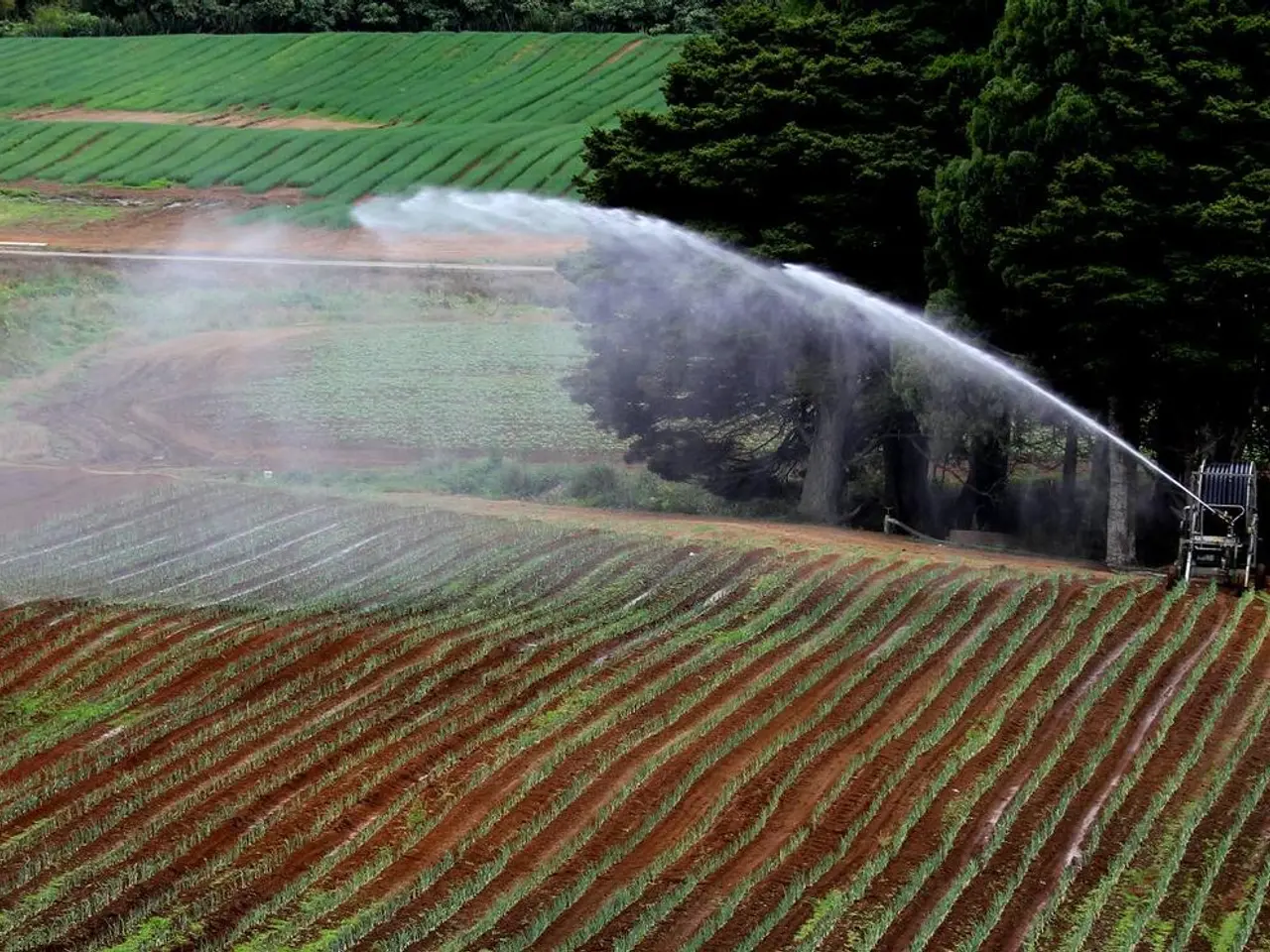The Impact of Advanced Technology on Optimizing Irrigation in Agriculture
In the realm of modern agriculture, a paradigm shift is underway as technology takes centre stage in the quest for sustainable water management. This transformation promises significant benefits, including water and energy conservation, increased productivity, reduced environmental impact, and enhanced resilience to climate variability.
One of the key innovations is the adoption of smart irrigation systems. These systems automate water delivery, applying water only when soil moisture falls below specific thresholds and rain is not expected. This precision drastically reduces overwatering, runoff, and water waste, conserving one of agriculture's most precious resources [1][2][5].
Automation in irrigation—through sprinkler, drip, or pivot systems controlled by intelligent control units—saves farmers time and labour by eliminating manual irrigation tasks. Real-time monitoring via IoT sensors provides immediate feedback and historical data for better farm management and regulatory compliance [1][3].
The use of contemporary irrigation systems, sensors, artificial intelligence, and water recycling can help maximise water use. For instance, drip irrigation, a method that sends water directly to the roots of plants, can cut water use by up to 50% [6]. Technologies like these help reduce water waste and increase crop yields [7].
Farmers are also embracing water recycling and rainwater harvesting to maximise water use. By storing water for later use during dry seasons using water tanks and smart reservoirs, farmers can ensure a steady supply and contribute to a more sustainable and water-efficient agricultural environment [8].
The agricultural sector's embrace of technology is not only about saving water. It's also about optimising soil moisture and nutrient application to promote healthier crops and more stable production, directly supporting food security goals [1][2][4]. Energy savings and cost reduction are also by-products of this shift. Smart irrigation systems can schedule watering during off-peak energy times, reducing pumping costs and overall energy consumption [1][3].
Moreover, technology-driven water management helps protect waterways, aquifers, and ecosystems. By reducing chemical runoff and over-irrigation, these technologies help minimise pollution and conserve biodiversity [3][4].
The integration of AI, big data analytics, and blockchain technologies further enhances this transformation. These tools provide actionable insights and transparency throughout the supply chain, aiding farmers, agribusinesses, and policymakers in making informed, adaptive decisions to optimise water use and sustainability outcomes [2][3].
In 2024, a guide on sustainable water management in agriculture was introduced, offering practical advice for farmers worldwide. With falling costs of IoT devices and digital applications accessible through web and mobile platforms, these solutions are becoming affordable for small to large farms worldwide, making sustainable water management broadly achievable [1][2].
In conclusion, technology-driven sustainable water management in agriculture is a critical innovation for sustainable farming's future. It offers farmers the opportunity to save money over time by using less water and increasing agricultural output, while also contributing to a more sustainable and water-efficient agricultural environment for future generations [1][2][3][4][5].
- The adoption of smart irrigation systems, including sprinkler, drip, or pivot systems controlled by intelligent control units, is a significant step in technology-driven sustainable water management in agriculture, as it promotes water conservation and provides real-time monitoring data for better farm management.
- The utilisation of contemporary technologies, such as artificial intelligence, water recycling, and IoT sensors, not only helps farmers reduce water waste and increase crop yields, but also offers opportunities for energy savings, cost reduction, and enhanced protection of waterways and ecosystems.




